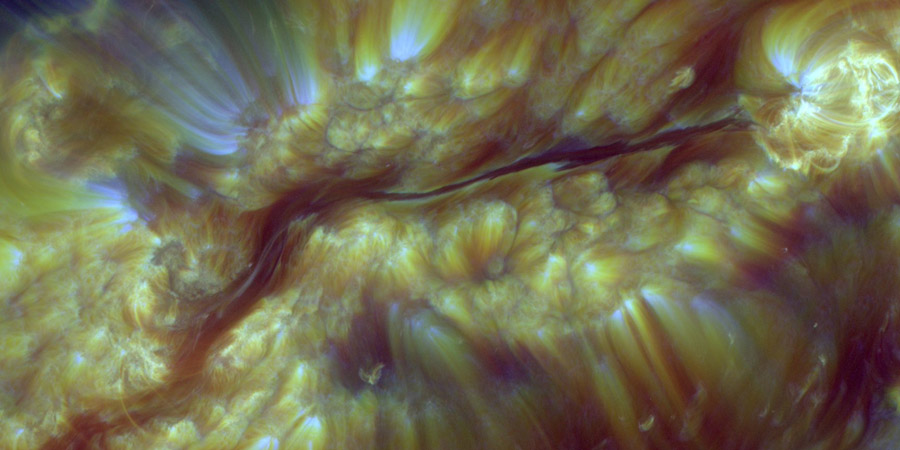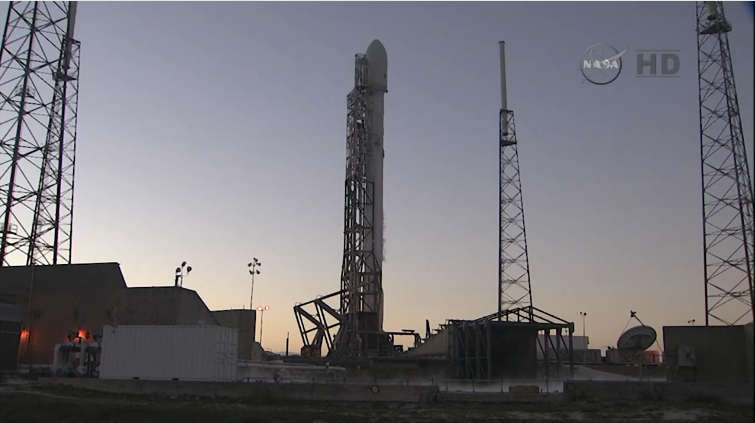DSCOVR launch delayed, large filament, complex sunspot regions
Monday, 9 February 2015 15:31 UTC

DSCOVR was supposed to be launched yesterday but the attempt was called off only minutes before launch due to two issues: a first stage transmitter issue and an issue with a range radar. Next possible launch opportunity would have been today at 23:07 UTC but this time has already been scraped due to unfavorable weather at the Kennedy Space Center in Florida, USA.

Image: The Falcon 9 rocket carrying the DSCOVR spacecraft at Cape Canaveral, Florida. Credit: NASA TV.
The next launch attempt for the DSCOVR mission will be on Tuesday, 10 February at 23:05 UTC. There is a backup launch opportunity on Wednesday, 11 February at 23:03 UTC.
Are you wondering why the DSCOVR mission will be so important for space weather enthusiasts or do you just want to know more about the DSCOVR mission? Read our news article from Saturday!
Filament facing Earth
A massive plasma filament (see header image) is currently facing Earth. It did show signs of instability yesterday but it thus far failed to erupt. Will it erupt before turning away from Earth?
Video: large filament facing Earth showing signs of instability. Credit: NASA SDO.
Sunspot regions 2280 and 2281
Sunspot region 2280 (Beta-Gamma-Delta) is showing signs of increased magnetic complexity and has two small delta sunspots. Sunspot region 2281 also has a moderately complex layout (Beta-Gamma) but does not have any delta sunspots. Solar activity has remained low (C-class solar flares only) today but an isolated low-level M-class (R1) event can not be ruled out from sunspot region 2280 or sunspot region 2281.
To view the sunspot regions currently on the earth-facing solar disk please visit this page.
Thank you for reading this article! Did you have any trouble with the technical terms used in this article? Our help section is the place to be where you can find in-depth articles, a FAQ and a list with common abbreviations. Still puzzled? Just post on our forum where we will help you the best we can!
Latest news
Latest forum messages
Support SpaceWeatherLive.com!
A lot of people come to SpaceWeatherLive to follow the Sun's activity or if there is aurora to be seen, but with more traffic comes higher server costs. Consider a donation if you enjoy SpaceWeatherLive so we can keep the website online!

Space weather facts
| Last X-flare | 2024/03/28 | X1.1 |
| Last M-flare | 2024/04/23 | M3.5 |
| Last geomagnetic storm | 2024/04/19 | Kp7 (G3) |
| Spotless days | |
|---|---|
| Last spotless day | 2022/06/08 |
| Monthly mean Sunspot Number | |
|---|---|
| March 2024 | 104.9 -19.8 |
| Last 30 days | 125.4 +21.1 |


